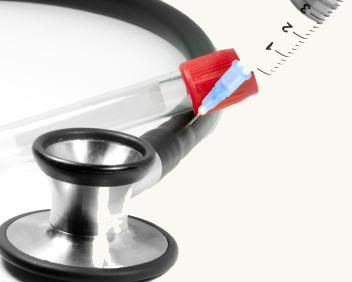Amidst a time of record highs in healthcare outlays, see why one expert believes overhauling the existing healthcare business model will be necessary to drive down costs. Learn more by reading this article from Executive Insight.
Providers in the current healthcare model make money by increasing the volume of medical care; the more care they provide and the more expensive it is, the more money they make. However, while increasingly expensive care may mean higher profits for the providers, it also drives away patients who are struggling financially in a difficult economy.
"In pursuit of higher and higher profits, companies tend to focus on their lead customers" says Matt Eyring, managing partner at Innosight, a global strategy and innovation consulting firm. "They overshoot the need of other tiers of the market, and it leaves room for new disruptive entrants to come in with products and services that tend to be cheaper, simpler and increase access to markets."
Disruptive innovation is a new reality, re-shaping the healthcare landscape from one of high costs and inaccessibility to affordable care and easy patient access.
Where to Innovate
Disruptive innovation – a technology or other innovation that has the staying power to “disrupt” the existing marketplace – is a dynamic concept that can take on a multitude of meanings, depending on the industry and the individual circumstances of any given company. So where can healthcare executives start when they decide to innovate within their own organization? They should focus on these three areas, according to Eyring:
- Location of care: Patients who receive care at a more localized location save money and time, and often receive higher quality of care. "Things that have to be done in an inpatient environment shift to an outpatient environment, and things from an outpatient environment to, potentially, clinics, and then to home. It's the movement, it's the de-centralization," says Eyring.
- Caregiver: Differently or less skilled caregivers can take on responsibilities traditionally assigned to highly skilled caregivers. As an example, Eyring explains that nurse anesthetists, rather than anesthesiologists, are now starting to administer anesthetics during medical procedures. Studies have shown that there is no significant difference in care, says Eyring. And since it cost more than six times as much to train an anesthesiologist, and they are paid twice as much, allowing nurse anesthetists to perform the same function lowers the cost without sacrificing quality of care, according to Eyring.
- Time of care: Preventative health is a key factor to saving lives-and money. Preventing or identifying and treating illness before it becomes a major health issue benefits the patient while also eliminating any financial burden associated with long-term treatment. "Many cancers are curable if you are detecting them upstream" Eyring adds.
Who is Innovating
Because healthcare is such an all-encompassing financial burden, healthcare executives are not the only ones looking to cut spending. Employers are rising to the challenge, and in an effort to reduce their healthcare expenditures, are incorporating disruptive innovations in the form of incentive-based healthcare services in their benefits packages. Many employer healthcare plans now include employee incentives for proactively managing their own healthcare. According to Eyring, Virgin Health Miles provides large corporations with an SaaS incentives platform that awards employees points for staying healthy, which can then be monetized. One of Virgin's most innovative incentives encourages employees to track their activity using company-issued pedometers and report their activity for points. Programs such as this, which focus on preventative care by emphasizing healthy lifestyles, are the first foot-hold in that market, says Eyring.
Tracking employee activity is just one example of companies shifting their healthcare strategy to incentivize their employees to be active participants in caring for their health. "Employers, interestingly, because of the unique pressures that they are facing, are actually leading many of these innovations," says Eyring.
Overhaul
Healthcare executives looking to disruptive innovation as a change agent have a lot of decisions to make. They will have to completely rethink their business strategy and build a new model from scratch to attain continued growth. "The stable business model in healthcare, leading to the kind of growth that these leaders need in the next five years really doesn't exist for most of them" Eyring states.
He notes, as an example, that the threat of mail-order pharmacies could potentially disrupt the traditional pharmacy model, bringing to the market pharmacies that offer more consultative care, especially for patients with chronic illnesses. Pharmacies looking to grow and remain competitive will have to redesign their strategy to meet the changing needs of the patient.
"Whether it's an accountable care organization or bundled payments--any structure that provides incentives toward a payment system that aligns patients, providers, payers and employers around providing high quality care in the right venues, using the right business model--is going to gain traction and have an impact" Eyring concludes.
Today's healthcare model, riddled with inefficiencies and skyrocketing costs, desperately needs innovations that disrupt the status quo and lead to more affordable, more accessible, simpler healthcare.




















